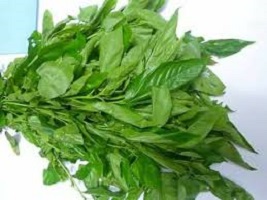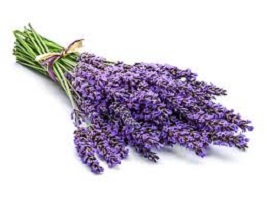Benefits of Jute Leaves (Saluyot/Egyptian Spinach/Ewedu)
Health Benefits of Jute Leaves (Saluyot/Egyptian Spinach/Ewedu)

What Are Jute Leaves? Highlights of Everything You Need to Know
- Saluyot, ewedu, and lalo are all names for jute leaves.
- The medicinal qualities of the leaves are also well-known.
- It has the potential to prevent illnesses such as arthritis, acne, asthma, the common cold, and others.
Related >>>
- Ewedu Leaf Health Facts: 13 Amazing Health benefits
- Indigenous Leafy Vegetables and Herbs in Nigeria
Table of Contents
What Are Jute Leaves?
Jute leaves (Corchorus olitorius) are a nutritious green leafy vegetable that can be prepared in a variety of ways.
They come from the Jute plant, which is a fibrous plant. Jute plant stems are frequently spun into strong, coarse threads, but the leaves are incredibly nutritious and eaten in many parts of the world.
Jute (Corchorus olitorius) is an edible leafy vegetable belonging to the genus Corchorus and the Grewioideae subfamily of the Malvaceae family.
Although it is common in parts of Africa, Asia, and the Middle East, many people believe jute leaves are native to Egypt and refer to it as Egyptian Spinach.
Jute mallow, saluyot, Jute, Jew’s mallow, Egyptian spinach, bush okra, West African sorrel, Chang shouo huang ma, and Krinkrin are some of the common names for Jute, which was previously regarded as Bangladesh’s golden fiber since it was the country’s most important cash crop.
Saluyot leaves, also known as ewedu in Yoruba and rama or Ayoyo in Hausa, are a popular vegetable in West Africa that is not only nutritious but also has a number of health benefits.
Nutritional Benefits
Saluyot leaves are a good source of nutrients, vitamins, and minerals, despite their slightly bitter taste.
94 grams of vitamin K, 0.496 milligrams of vitamin B6, 2.73 milligrams of iron, 225 milligrams of vitamin A, 28.7 milligrams of vitamin C, and 0.222 milligrams of copper are included in 87 grams of jute potherb, boiled without salt.
In addition, 87 grams of cooked jute has 0.021 g of Tryptophan, 0.113 g of Threonine, 0.152 g of Isoleucine, 0.266 g of Leucine, 0.151 g of Lysine, and 0.044 g of Methionine.
Many individuals consume the leaf (Ewedu), but few are aware of its health benefits. It can be used in a variety of ways, including soup and smoothies.
Jute leaf has a number of health benefits, which are listed below:
Jute Spinach is a nutrient-dense superfood, packed with vitamins, minerals, and antioxidants that are good for the health. Among their huge benefits are:
- Anti-aging properties
Cleopatra is said to have eaten a lot of these leafy greens to maintain her youth and skin fresh!
Antioxidants and omega-3 fatty acids found in jute leaves assist to slow down the effects of aging and support healthy skin.
- Enhances digestion
Saluyot leaves can aid with constipation and gut health. It can also be used to treat stomach problems like diarrhea, bloating, and gas.
- Anti-inflammatory and immune-boosting properties
Ewedu leaves aids in the strengthening of the immune system and the prevention of colds and viruses. Because it is high in antioxidants, it aids in the treatment of inflammation in the body.
- Healthy Hair, teeth, and bones
- Loss of weight/weight loss
- Spiritual benefits
- Insomnia
- Asthma and Breathing Issues Treatment
- Jute is used as a traditional medicine for aches and pains, fever, diarrhea, enteritis, pectoral pains, and tumors, among other things.
- Ascites, discomfort, piles, and tumors are treated with the leaves.
- It’s said that the cold infusion will help you regain your appetite and strength.
- Dysentery, fevers, liver problems, and dyspepsia are all treated with an infusion.
- In the treatment of dysentery, a decoction of the roots and unripe fruits is utilized
- Cystitis, dysuria, fever, and gonorrhea are all treated with the leaves.
Other Information
- The plant’s stem can be used as firewood.
- Rope, pulp, paper, fiber, and composites are all examples of industrial products that utilize stalks
- Fiber is used to make gunny bags, rugs, ropes, carpets, rough cloth, and a variety of other everyday items
- Sulfur matches are made from light, softwood
Is it possible to eat jute leaves? Are Saluyot leaves edible?
They can be eaten raw, cooked, steamed, or pureed, and they are edible. The leaves get extremely slimy when cooked. Though this may be off-putting to some, this mucilaginous characteristic is particularly beneficial for a variety of digestive disorders.
Where to buy jute leaves?
In regions where they are cultivated naturally, these leaves can be bought in local food stores. If they aren’t grown locally, you may be able to find them in African, Asian, or Middle-Eastern markets in your nation.
If fresh leaves are unavailable, frozen leaves will suffice. They also last longer because they are already frozen, and you can keep them for several months in the freezer.
How to cook with lalo leaves
Fresh Saluyot leaves have a slightly bitter flavor. They have a gelatinous feel and are exceedingly slippery. The juice becomes slimmer and thicker as they simmer longer.
Ewedu leaves can be cooked in a variety of ways to bring out their delicious flavor.
They’re used to make a ‘draw soup’ with fufu in Nigeria. Ewedu Soup is a wonderful and nutrient-dense soup.
How are ewedu leaves used? Jute leaves are used in a variety of ways.
Here’s everything you need to know about its culinary and medicinal use.
- They are cooked into a sticky soup known as ewedu in most parts of Nigeria, together with other ingredients such as sweet potato, dried tiny fish, or shrimp.
- Saluyot leaves are used to make soups, stews, curries, smoothies, vegetable meals, and occasionally teas and tisanes.
- Like bhindi or okra, another typical vegetable thickener, the leaves tend to become gluey or sticky.
- Ewedu leaves, like spinach and other leafy green vegetables, can be cooked whole or cut finely to better combine with other dishes and seasonings.
- It’s sometimes eaten as a boiled vegetable with lemon and olive oil.
- Good for pregnant women and fertility
- It’s a popular meal in the Philippines’ northern provinces, where it’s known as saluyot.
- Jute leaves are also eaten by the Luyhia people of Western Kenya, where they are called’mrenda’ or’murere.’
- It is served with ‘ugali,’ a staple in most Kenyan villages.
- Japan has been importing dry jute leaves from Africa and utilizing them as a coffee and tea alternative.
- Jute leaves are used to make soup throughout Europe.
- It can be steamed and pureed, blended with chicken, or made into molohiya soup, as the Japanese call it.
- Ewedu leaves, like spinach and other leafy greens, can be cooked whole as a significant component of a dish or diced finely to combine well with other components.
- In India, leaves and delicate shoots are consumed.
- The leaves are boiled in water like cabbage and eaten with other cuisines or on their own with a little salt.
- Ewedu leaves are added to soups, stews, teas, and vegetable dishes to add taste.
- In soups, dried leaves can be used as a thickening.
- Young leaves are added to salads.
How to preserve
If you have fresh leaves, dry them out before storing them. Dry them completely before wrapping them in paper towels and placing them in the refrigerator. They should last one to two weeks in the refrigerator.
They can also be blended with a little water and frozen in an airtight container or Ziploc bag. This is one of the greatest ways to keep jute leaves fresh for a long time.
Side Effects of jute leaves
Ewedu leaf has yet to be linked to any negative side effects… However be aware of possible gastrointestinal side effects like nausea, vomiting, abdominal cramps, diarrhea, allergy.



